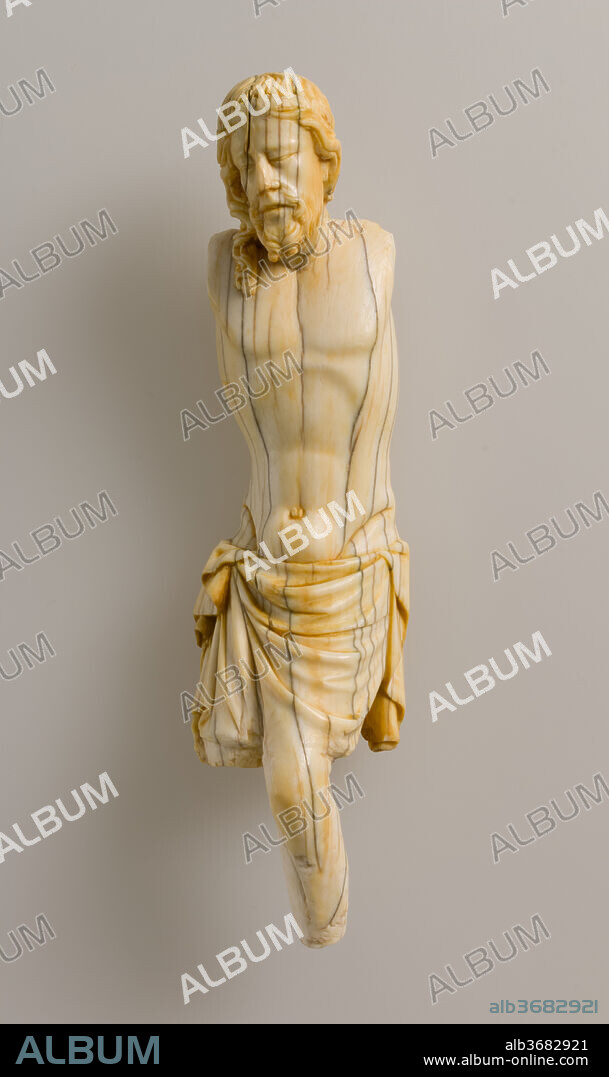alb3682921
Crucified Christ

|
Add to another lightbox |
|
Add to another lightbox |



Title:
Crucified Christ
Caption:
Crucified Christ. Culture: French. Dimensions: Overall: 6 5/8 x 1 11/16 x 1 5/16in. (16.8 x 4.3 x 3.4cm). Date: ca. 1260-80.
The suffering of Christ on the cross was so important in Gothic art that the mid-thirteenth-century statute of the corporations of Paris included a guild dedicated to the carving of such images, including ones in ivory. This ivory sculpture of Christ, whose pathos and agony are beautifully conveyed, was executed in the round and most certainly was intended for an altar cross. In spite of the loss of both arms and parts of the legs (which originally were attached to the body by means of pegs), the modeling of the figure reveals a profound sensitivity to form and expression. The powerful anatomical structure--portraying, naturally, the corporeality of the dying Christ--is remarkable for a crucifix of this period. The closed eyes and the long hair, which falls down the back and right side of the head, reveal the emotional impact of death. A subtle twist in the torso was produced in part by the positioning of the legs, which were crossed and mounted on the cross with a single nail.
Technique/material:
Elephant ivory, traces of polychromy
Museum:
Metropolitan Museum of Art, New York, USA
Credit:
Album / Metropolitan Museum of Art, NY
Releases:
Model: No - Property: No
Rights questions?
Rights questions?
Image size:
2618 x 4400 px | 33.0 MB
Print size:
22.2 x 37.3 cm | 8.7 x 14.7 in (300 dpi)
Keywords:
 Pinterest
Pinterest Twitter
Twitter Facebook
Facebook Copy link
Copy link Email
Email
